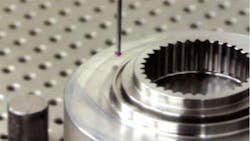Gearmakers say they often see unrealistic expectations when inexperienced engineers get into specifying custom work. “A lot of engineers have never worked in industry so they have no idea how long it takes to manufacture parts that are intricate or technically difficult. A lot of purchasing personnel have the same problem because they have never taken the time to understand the capabilities of their suppliers,” says Fred Young, CEO of custom gearmaker Forest City Gear in Roscoe, Ill. Among other things, Forest City frequently custom-fabricates gears with finishes having super-high AGMA quality tolerances.
Tolerancing is another bugaboo. “When people have gear problems, they often think tightening-up tolerances will solve it,” Young says. “Use of tighter tolerances is frequently a crutch for engineers who lack the experience to understand how a mechanism actually works and what aspects are really critical to the build of the part.”
Young maintains tolerancing often gets wrongly blamed for a variety of gear problems. “We sometimes get gears with noise issues that were made by another vendor. The first question to ask is whether the part really was manufactured poorly or whether it was just a problem with the design,” he says. “Most shops can’t check their parts adequately or monitor the tolerance of gears. They may not be able to tell whether the gear was manufactured properly, whether it was designed to the appropriate tolerance, or whether the engineer just didn’t design the tooth correctly.”
Many such difficulties can be chalked up to lack of experience. “There are a lot of young engineers who don’t have the years of experience you need to sniff out gear problems,” Young says. “And a lot of manufacturers won’t spend money to do R&D on their parts to detect problems in advance. Or their designers are afraid to admit they don’t have enough knowledge to design something and take a pot shot at it. They end up taking a lot longer to design a part that is a lot more expensive than it would be otherwise.”
Resources: Forest City Gear
About the Author
Leland Teschler
Lee Teschler served as Editor-in-Chief of Machine Design until 2014. He holds a B.S. Engineering from the University of Michigan; a B.S. Electrical Engineering from the University of Michigan; and an MBA from Cleveland State University. Prior to joining Penton, Lee worked as a Communications design engineer for the U.S. Government.
